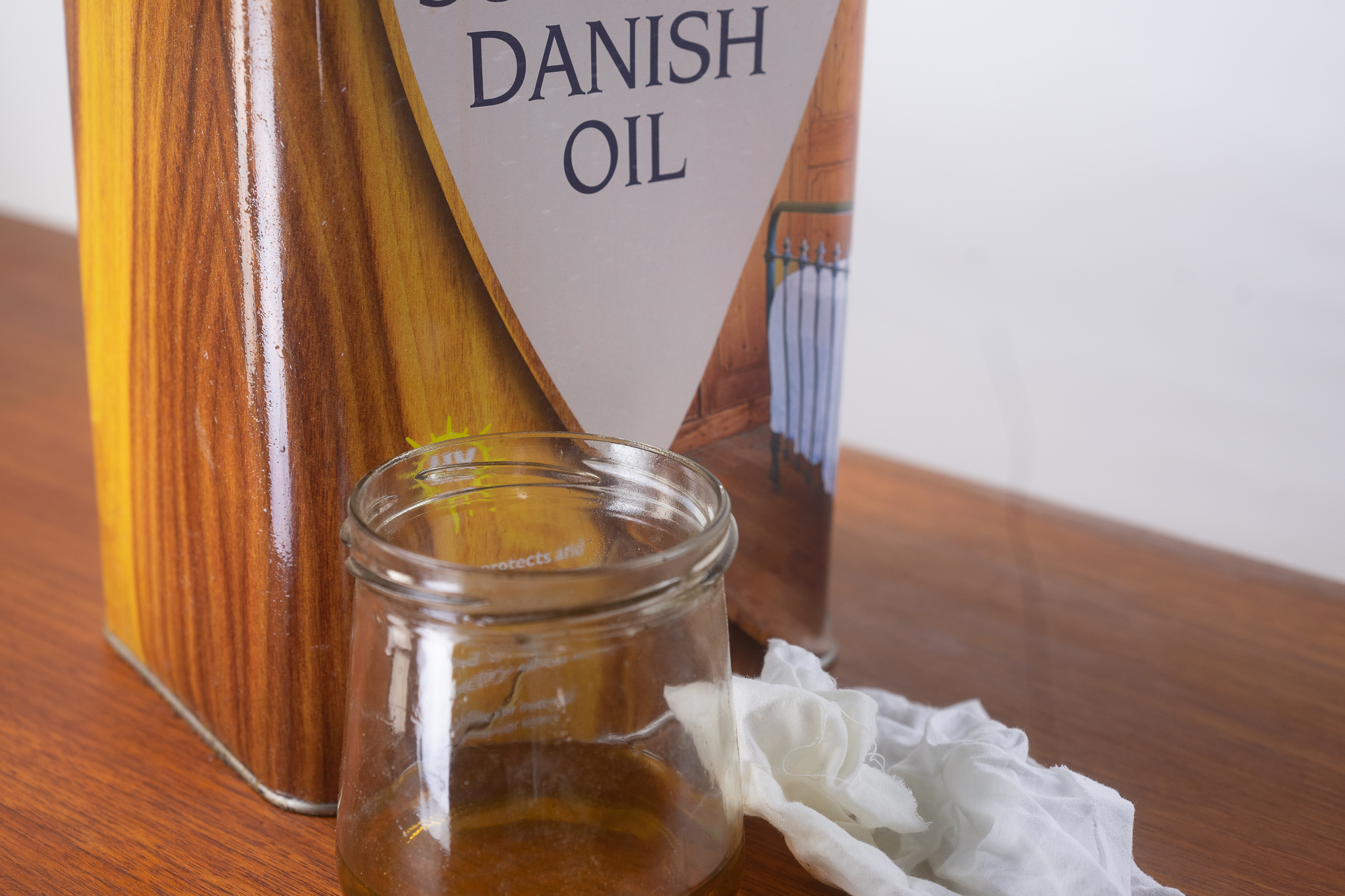
So what is Danish oil?
You’ll find Danish oil gets mentioned a lot in the care and restoration of Mid-century furniture. It’s the finish that’s applied to most of the pieces from this era. What is it? Well, there are no hard and fast rules as to what goes into it but it’s generally a blend of mainly tung or linseed oil with other oils or polymers, that soaks into the wood to produce a durable low-sheen finish with good water resistance.
Why Danish?
This is the finish that came to be associated with the ‘new’ furniture that emerged from Danish designers in the 1950s and 60s. It’s the perfect finish for such open grained woods as teak that is the hallmark of the style. It brings out the beauty of the grain and gives a natural-looking, satin finish rather than a hard, glossy lacquer, and so fits with the more organic, minimalist look of Mid-century Modern style. Added to that, its ease of application and quick drying made it ideally suited to industrial scale production.
At Vinegar Works Vintage I use Liberon Superior Danish Oil when I need to restore and revive old finishes. It’s a blend of tung and other natural oils.
Tung oil?
Tung oil comes from the nut of the tung tree (vernicia fordii), and the name comes from the Chinese tongyu. It’s been used to protect wood in China for thousands of years – it gets mentioned by Confucius – what better recommendation.

Recent Comments